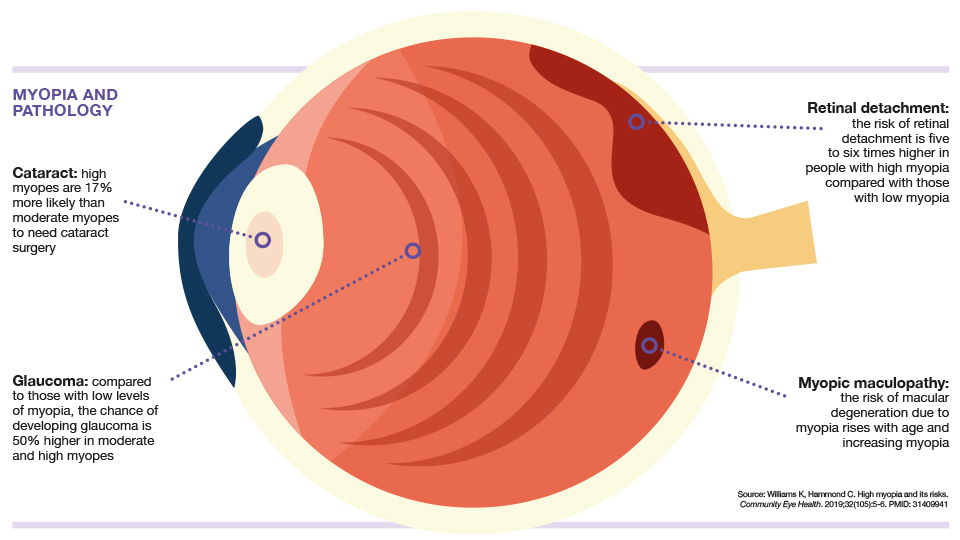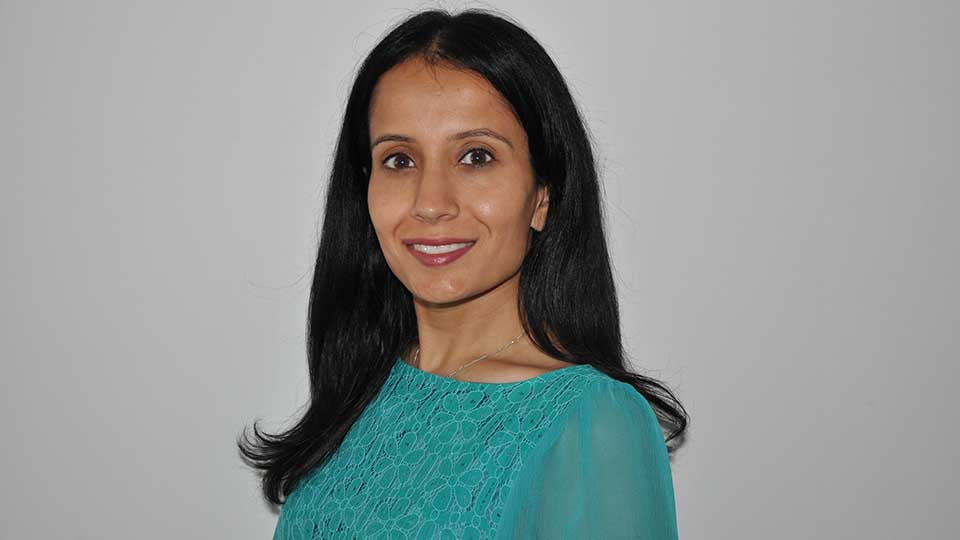- OT
- Science and vision
- Research
- The big short
Myopia guide
The big short
Eye care professionals share their views on why the profession needs to take myopia seriously

10 October 2021
Why embrace myopia management? There is the lifetime risk of pathology linked to myopia, warnings that levels of short-sightedness could rise to close to close to five billion people by 2050, and the World Council of Optometry’s resolution urging a shift in focus from solely correcting vision to educating patients about myopia and exploring management options.
Aside from all this, for many eye care professionals (ECPs), myopia management comes down to the patient in the chair.
“I always try to ask myself, ‘What would I do if this patient was a member of my family?’” optometrist Craig McArthur explains to OT.
“I have a four-year-old son, Noah. If he develops myopia, I would immediately start him on the most appropriate myopia management strategy,” he added.
In the past, hesitancy has surrounded myopia management because of a perceived lack of evidence supporting the different interventions that are available.
But now research exploring the mechanisms behind myopia and the different management strategies is accruing at an increasingly rapid rate.
This evidence has given regulatory authorities the confidence to approve a range of options to manage the progression of the condition.

Optometrist, Dr Kate Gifford, described myopia management as combining the best of primary eye care – correcting vision while also helping to safeguard eye health for the future.
“Given that our optical interventions for myopia management offer the ability to both correct and control myopia, with strong efficacy, it makes absolute sense for us to move from simply prescribing single vision correction to utilising options which correct and help to protect vision,” she emphasised.
For optometrist, Sarah Farrant, myopia management has the potential to transform the way that the profession practises. “It is such an exciting option given we can actively engage with, rather than passively manage, the unfolding problem,” she highlighted to OT.
I always try to ask myself, ‘What would I do if this patient was a member of my family?
Farrant added that the established evidence base behind myopia management supports the view that ECPs should at least be giving patients the opportunity to make an informed decision about myopia management options.
Professor Kathryn Saunders shared her view that myopia management is a “natural progression” for optometric practice.
“We have been diagnosing and correcting myopia forever. It is exciting now to think that we can not only correct this increasingly common condition, but influence its trajectory with the aim of keeping prescriptions as low as possible, which is more convenient for patients as well as improving long-term ocular health outcomes,” she shared with OT.
She noted the importance of ECPs ensuring that management options are supported by robust research and that the limitations of different management options are understood.
“There is a growing body of evidence available to ECPs to support them in implementing myopia management strategies, including providing advice on anti-myopia lifestyle modifications, such as spending more time outdoors, for those children at risk of myopia but not yet myopic and eye growth data with which to compare and monitor patient’s eye size and their response to intervention,” Saunders observed.
The pandemic and myopia
Research published following the outbreak of the COVID-19 pandemic has illustrated the impact that rapidly altered lifestyles has had on the development of myopia in children.
In an article published in the British Journal of Ophthalmology, scientists from Hong Kong and Singapore highlighted that the annual incidence of myopia more than doubled following the pandemic.
The researchers reported that 68% of children within the study group reduced their time outdoors following COVID-19, while screen time increased 2.8-fold.
Optometrist Indie Grewal shared that during the pandemic children were using digital devices to study as well as to socialise.
“We have seen a lot of children who haven’t been myopic previously becoming myopic. We have seen changes in children who are in myopia management strategies that were perhaps larger than we would have expected,” he said.
Professor James Wolffsohn noted that nine recently published studies have so far identified an increase in myopia progression during the pandemic.
“One study found this myopic progression was reversed partially after lockdown, suggesting that both accommodative spasm and structural changes contributed to this accelerated rate.”
“We are passionate about changing the trajectory of childhood myopia”

CooperVision professional services consultant Hema Patel on how the company is supporting ECPs to improve the lives of their patients through myopia management
Myopia management is one of the most exciting developments in modern optometric practice. As eye care professionals (ECPs), we are at the forefront of this rapidly expanding industry, which offers an opportunity to enhance the lives of millions of children. At CooperVision we are passionate about changing the trajectory of childhood myopia. More than 50% of the global population is estimated to be myopic by 2050.1 Over the last 50 years, myopia has more than doubled in the UK.2
Our goal is to ensure every pre-myopic and myopic child is offered myopia management to help maintain good ocular health and reduce the risk of future visual impairment. ECPs play a pivotal role in educating and advising parents and children on myopia and myopia management strategies. Starting a child on a myopia management intervention early allows them to receive the optimal benefit of treatment.3 Commencing myopia management in an older child can still be beneficial in slowing the rate of progression.3 A paper by Mark Bullimore demonstrated that every dioptre counts when managing myopia and can help to reduce the risk of myopic maculopathy by 40%.4 Professional bodies are beginning to advocate myopia management as the standard of care, including the World Council of Optometry.5 CooperVision is supporting ECPs to embrace myopia management through its Brilliant Futures TM programme with MiSight® 1 day, which includes an accreditation course of eight modules to help ECPs get started. Upon completion, ECPs can access MiSight 1 day lenses for their patients alongside useful tools such as the Parent guide, Getting started guide, MiSight clinical decision tree and clinical summary. The CooperVision Learning Academy offers additional resources to both ECPs and support staff: www.academy.coopervision.co.uk
References
- Holden BA, Fricke TR, Wilson DA et al. Global Prevalence of Myopia and High Myopia and Temporal Trends from 2000 through 2050. Ophthalmology. 2016 May;123(5):1036-42
- McCullough SJ, O'Donoghue L, Saunders KJ. Six Year Refractive Change among White Children and Young Adults: Evidence for Significant Increase in Myopia among White UK Children. PLoS One. 2016 Jan 19;11(1):e0146332
- Chamberlain P, Arumugam B, Jones D et al. Myopia Progression in Children wearing Dual-Focus Contact Lenses: 6-year findings. Optom Vis Sci. 2020;97(E-abstract):200038
- Bullimore MA, Brennan NA. Myopia Control: Why Each Diopter Matters Optom Vis Sci. 2019; 96: 463-465
- World Council of Optometry Resolution. The Standard of Care For Myopia Management by Optometrists. https://worldcouncilofoptometry.info/resolution-the-standard-of-care-for-myopia-management-by-optometrists/. Accessed August 4 2021.
Myopia: a modern problem?
Ophthalmologist John Bolger argues that a shift in lifestyles has caused a rising tide of short-sightedness
Most of the 4.9 billion people who will be myopic in 2050 have not yet been born. When they arrive in this world they will come with a perfect eye growth algorithm that for millions of generations has produced emmetropia. But as soon they arrive in the modern urbanised world, this algorithm is corrupted by unnatural environmental inputs which causes the eye to continue to elongate.
Have you ever wondered when looking at the skulls of human ancestors in a museum why they all had perfect teeth? It is the modern processed, sugared and softened diet of today that gives us the need for dentists and orthodontists. And our ancestors had perfect vision too: even low myopes would not have been able to feed themselves or avoid predators to reproduce. The challenge is to produce an environment for this imminent future generation that allows their eyes to develop naturally.
I believe we know enough now to allow this to happen. In my view the two major causes of this pandemic of myopia are, firstly, the levels of lighting that we habitually occupy and, secondly, the unnatural prolonged close work that is part of modern life.
Our ancestors used accommodation only briefly to check whether a berry was edible and immediately were looking in the distance for the next berry and to ensure there were no predators nearby. Prolonged uninterrupted close work had no survival value. It is not a question of finding a “cure” for myopia, it is a question of allowing our future children to live in an environment that is natural and allows natural development. In the meantime, we need to help those of us who are already myopic and progressing.



Comments (0)
You must be logged in to join the discussion. Log in